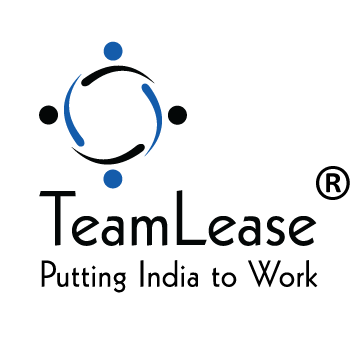Difference Between Recruitment and Hiring: Key Insights

The words recruitment and hiring are often used interchangeably. At first glance, they seem to mean the same thing, bringing people into an organisation. But anyone who’s worked in HR, staffing, or business operations knows that these two terms, though closely linked, represent different stages of a much larger process.
Understanding that difference isn’t just a matter of semantics, it’s the key to building a smarter, more sustainable workforce strategy.
-
Recruitment vs. Hiring: The Fundamental Difference
Recruitment is about identifying, reaching out to, and engaging potential talent for a role.
Hiring, on the other hand, is about selection and integration, choosing the right candidate and completing the formal steps to bring them into the organisation.
Think of recruitment as fishing in the right waters and hiring as choosing the right catch and making sure it fits your basket.
Recruitment involves activities such as:
- Crafting job descriptions
- Posting vacancies on job portals and social media
- Searching databases for potential candidates
- Screening resumes and conducting initial assessments
- Employer branding to attract the right talent
Hiring includes:
- Conducting final interviews
- Evaluating shortlisted candidates
- Making offers and negotiating terms
- Background checks and onboarding
So, while recruitment builds the pipeline of possibilities, hiring converts those possibilities into people who join your team.
-
The Recruitment Stage: Building the Right Talent Pipeline
The recruitment process starts much before the first resume arrives. It begins with understanding what the business needs. Understanding the difference between recruitment and hiring helps organisations design better processes and reduce time-to-fill without compromising on quality.
Recruitment is therefore both strategic and relationship-driven. It’s not just about filling seats; it’s about building a network of potential candidates who align with your organization’s values and long-term goals.
Example: A FMCG company looking for sales promoters may not need permanent staff for every region. Through a recruitment partner, they can build a flexible database of field associates who can be deployed during product launches or festive campaigns. This ensures speed, consistency, and brand recall, even before hiring begins.
-
The Hiring Stage: Making the Right Match
Hiring begins once you have a shortlist of potential candidates. This stage is about making informed decisions and ensuring a smooth transition from candidate to employee.
Good hiring is data-driven but human-centred. While assessments and metrics play a role, what matters equally is understanding cultural fit, motivation, and the individual’s ability to grow with the company.
Example: A logistics company may receive 500 applications for delivery executives. Recruitment ends once those profiles are sourced and filtered. Hiring begins when managers conduct interviews, check driving records, verify documents, and finalise offers. The process is operational, but the difference between a smooth hire and a bad one lies in attention to detail; a delayed offer or poor onboarding experience can quickly push a candidate to a competitor.
In today’s competitive job market, the hiring experience is a reflection of your employer brand. From communication and responsiveness to how feedback is delivered, every touchpoint affects how potential employees perceive your organisation.
-
Why the Distinction Matters
a. Strategic Planning: Recruitment is long-term. It builds talent pipelines, nurtures relationships, and aligns with business forecasting. Hiring is immediate. It responds to current vacancies and ensures business continuity.
If a company invests only in hiring without strengthening its recruitment engine, it ends up in a cycle of reactive decisions, always rushing to fill gaps rather than building a sustainable workforce.
b. Employer Branding: Recruitment shapes perception. The way job posts are written, interviews are conducted, and candidates are treated all of this impacts how your organization is viewed in the job market.
Hiring solidifies that perception. Once a person joins, their onboarding experience decides whether they become brand advocates or cautionary tales.
c. Cost and Efficiency: A well-structured recruitment process reduces hiring costs. For instance, maintaining a talent database or collaborating with staffing partners helps fill future roles faster and more affordably than starting from scratch each time.
-
The Modern Reality: Recruitment and Hiring Are Converging
The line between recruitment and hiring has blurred over the past few years, thanks to technology, analytics, and evolving workforce models, making the difference between recruitment and hiring even more nuanced in today’s dynamic work environment.
Digital tools from AI-driven resume screening to predictive analytics now allow recruiters and hiring managers to collaborate in real time.
Platforms like LinkedIn, job boards, and staffing tech solutions create a continuous loop of talent identification, engagement, and onboarding.
Moreover, the rise of flexible staffing and gig employment has changed the definition of “hiring” itself. For many industries, especially logistics, retail, e-commerce, and manufacturing, the focus has shifted from permanent hires to deploying the right talent at the right time.
-
The Human Side of Recruitment and Hiring
Behind every resume lies a person with goals, constraints, and aspirations. Whether you’re recruiting or hiring, the human touch defines your success.
It’s easy to automate processes, but challenging to automate empathy. The best organisations combine the efficiency of systems with the sincerity of human interaction.
Conclusion
Recruitment and hiring are two sides of the same coin – one focused on finding people, the other on bringing them in. Recruitment builds relationships; hiring seals commitments. Together, they form the backbone of every successful workforce strategy.
In an economy where talent is both scarce and mobile, understanding this distinction isn’t academic; it’s strategic. It’s what separates organisations that constantly chase talent from those that attract it naturally.
Looking to strengthen your recruitment and hiring strategy?
Partner with TeamLease to build a future-ready, compliant, and scalable workforce.
Latest Blogs
New Labour Code: A Workforce Wake-Up Call for India
For years, India’s labour ecosystem resembled a dusty filing closet, layered, confusing and waiting for someone brave enough to open it. The arrival of the...
Read More4 New Labour Codes: How Workers and Employers Benefit
Reforms shape the future only when they simplify the present. India’s new Labour Codes stand out as one of the most meaningful updates to the...
Read MoreEmployer of Record (EOR) Services: Hire in India
According to the International Monetary Fund (IMF), India remains the only major economy projected to grow above 6% in FY 2025, with a forecasted GDP...
Read MoreRPO vs Contract Staffing: Choosing the Right Talent Model
The Talent Dilemma: Balancing Long-Term and Short-Term Hiring Needs Priya, the HR Head of a fast-scaling Indian startup, faced a familiar challenge. Her company was...
Read MoreWhat Are the 3 New EPFO Withdrawal Rules? Explained Clearly
Social security isn’t about saving for retirement; it’s about staying secure through every stage of work.” The Employees’ Provident Fund Organisation (EPFO) has revamped its...
Read More





